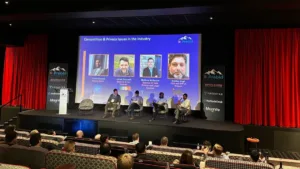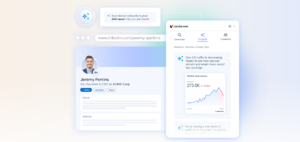By Casper Rasmussen, Global SVP of Technology, Valtech
A recent Gartner study found that businesses which adopt a composable approach to their tech stacks could outpace their competition by 80% in the next year. Once a little-known concept, composable technology architecture is fast becoming a hot topic across all sectors and verticals.
Why the sudden interest?
As businesses become more digitally mature, their existing software solutions can start to feel restrictive. Meanwhile, scalability, flexibility and automation – characteristics inherent to a composable tech stack – become priorities as they seek to foster global reach, accelerate innovation and deliver commercial excellence.
The current appetite for composable architecture can also be attributed to the fact that improving customer experience and winning customer loyalty are now at the top of the agenda for businesses – 88% of customers say that experience is just as important as a company’s products or services. A composable tech stack enables businesses to achieve these goals by gaining an accurate 360 view of customers, and thereby unlocking new, never-before-seen levels of personalisation across markets and touchpoints.
What exactly is a composable tech stack?
Composable architecture represents an evolution beyond ‘off the shelf’ single-vendor platform software. How do they differ? Well, procuring single-vendor platform software is akin to buying a ready-to-wear suit. Meanwhile, adopting a composable approach is like visiting a tailor to create a bespoke outfit. Each part of a composable software solution represents a core, reconfigurable digital ability, such as content operations, digital asset management and customer data management. This enables businesses to build a wholly personalised, best-of-breed tech stack in which all elements seamlessly communicate.
For years, businesses have been procuring single-vendor monolithic software platforms like they’re going out of style. The short-term benefits are tantalising, enabling them to launch new tools quickly without worrying about the technical design or build process. There are also clear financial benefits.
But the single-vendor monolithic software platform free-for-all is now coming to an end. Businesses are starting to realise that short-term gains often result in long-term pains. Since off-the-shelf software can’t be personalised to meet business’ evolving needs, it often stifles rather than enables innovation. This is particularly true in multi-brand or multi-regional businesses that have grown through mergers and acquisitions. These companies often have a patchwork of multiple, disconnected solutions that fulfil similar purposes.
Unlike single-vendor monolithic software platforms, a composable tech stack enables businesses to carefully craft a single, unified IT landscape. Core to this is removing longstanding silos to unite customer, financial, operational and marketing data. This enables companies to finally paint a complete picture of their customers, allowing them to innovate quicker and make data-driven decisions rather than relying on hunches or gut feelings.
Who’s implementing a composable approach, and what impact is it having?
Implementing composable IT architecture isn’t the right fit for all businesses. A company must have reached a certain level of digital maturity and be willing to embark on a longer digital transformation journey. Having buy-in from senior leadership is also crucial. This is because implementing a composable architecture doesn’t involve one seismic shift, but multiple iterative changes. It can help to think of composable as a mindset – a set of philosophies and frameworks that enable businesses to think more freely, innovate and put the customer first.
A growing number of global businesses are adopting this ‘composable mindset’. For instance, FMCG giant Mars recently partnered with business transformation agency Valtech and commerce vendor Commercetools to create a composable commerce solution to support its direct-to-consumer (D2C) strategy. The solution is key to Mars’ goal of differentiating customer experiences across its 50+ brands, and has enabled it to supercharge time-to-market, flexibility and scalability.
The results speak for themselves. Since adopting its composable solution, Mars has boosted incremental in-year revenue for its snacking D2C proposition by a fifth (20%), demonstrating the real-world potential of composable software architecture to drive commerce innovation.
What’s next for composable software?
Ultimately, adopting composable IT architecture enables businesses to improve customer experience, enhance internal efficiency and create new revenue streams. Given the impressive results that many companies – including Mars – are already seeing with this approach, we can expect it to grow in popularity in the coming years as competitors wake up to the possibilities.
Will we eventually see the death of the software monolith? Probably not. But we’re definitely experiencing the end of its supremacy.









